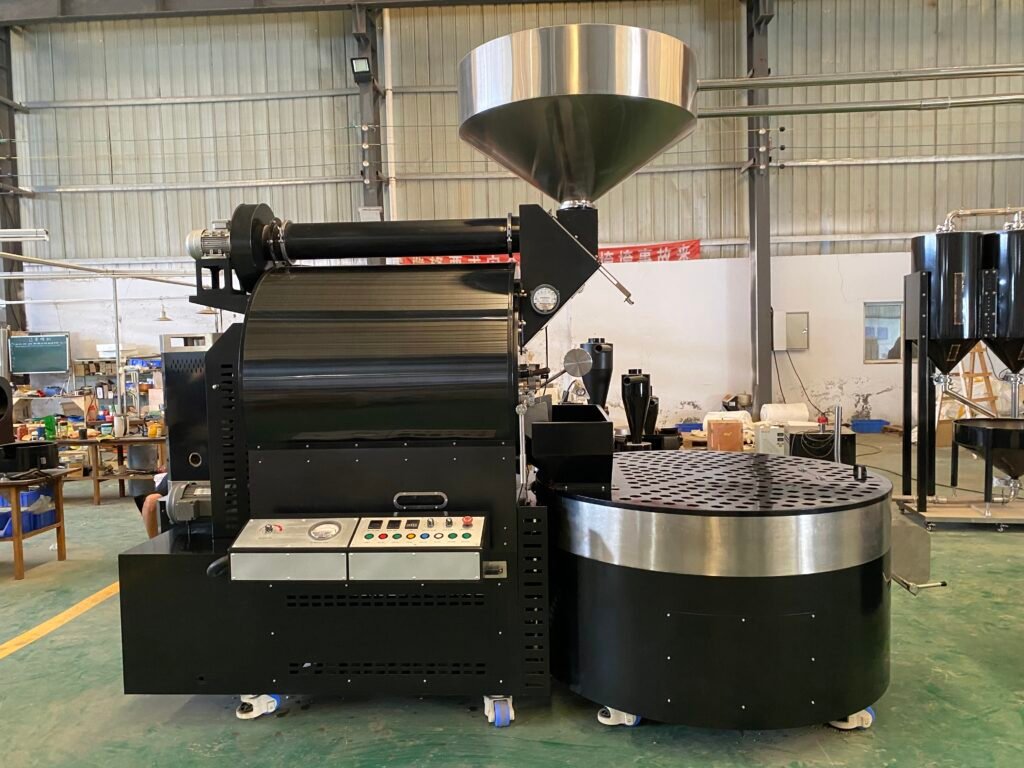Core Maintenance Essentials for Coffee Roasters: Daily Practices for Longevity
Maintaining a coffee roaster is critical to preserving flavor consistency and extending equipment lifespan. While professional servicing is essential annually, daily operational habits directly impact performance. Below are actionable maintenance strategies derived from industry best practices.
1. Immediate Post-Roast Cleaning Protocols
Residue Removal After Each Batch
Coffee chaff and oils accumulate rapidly during roasting. Immediately after completing a batch, use a soft-bristle brush to clear chaff from the cooling tray, drum interior, and exhaust vents. For stubborn residue, dampen a microfiber cloth with distilled water (avoid tap water to prevent mineral deposits) and gently wipe surfaces. Never use abrasive pads, as they can scratch non-stick coatings on modern roasters.
Drum and Chaff Collector Maintenance
The roasting drum requires daily inspection. After cooling, manually rotate the drum to check for obstructions. Clear any trapped beans or debris from the chaff collector using a vacuum designed for fine particles. In hard-water regions, rinse the collector’s metal filter with a 50% white vinegar solution monthly to dissolve mineral buildup.
2. Thermal System Care
Heat Exchanger and Burner Checks
Gas-powered roasters demand daily monitoring of burner flames. A yellow or uneven flame indicates incomplete combustion, often caused by clogged air intake vents. Use compressed air to blow out dust from vents weekly. For electric models, inspect heating elements for discoloration or cracks, which may signal overheating.
Cooling Fan Efficiency
The cooling fan’s blades and motor housing collect chaff over time. Before each roast, spin the fan manually to ensure smooth rotation. After shutting down, vacuum the intake grille to prevent airflow restriction. A blocked fan can extend cooling times by up to 30%, risking over-roasted batches.
3. Lubrication and Mechanical Adjustments
Bearing and Gear Inspection
Roaster drums rely on bearings that require periodic lubrication. Apply food-grade silicone grease to drum axles every 50 hours of operation. Listen for grinding noises during rotation, which indicate worn bearings needing replacement. Similarly, check chain drives on conveyor systems for slack; tighten or replace chains showing fraying.
Temperature Probe Calibration
Inaccurate temperature readings lead to inconsistent roasts. Use a digital infrared thermometer to cross-verify probe readings weekly. If discrepancies exceed ±5°F, recalibrate the probe per the manufacturer’s instructions. For analog dials, adjust the calibration screw using a precision screwdriver.
4. Environmental and Safety Checks
Ventilation System Integrity
Roasters emit volatile organic compounds (VOCs) during roasting. Ensure exhaust ducts are free of kinks or blockages. Replace duct filters quarterly, or sooner if odors persist post-roast. In enclosed spaces, install carbon monoxide detectors near the roaster and test them monthly.
Electrical Component Safety
Inspect power cords for fraying or exposed wires daily. Use a multimeter to test grounding continuity on metal casings. For roasters with digital interfaces, update firmware via manufacturer-provided software to prevent glitches in automated roast profiles.
5. Data-Driven Maintenance Scheduling
Logbook Documentation
Maintain a digital or physical logbook recording roast batches, cleaning times, and part replacements. Patterns such as frequent bearing failures may indicate underlying issues like improper drum alignment. Share logs with technicians during annual servicing to streamline diagnostics.
Predictive Part Replacement
Track the lifespan of consumables like gaskets and seals. Replace drum seals annually, even if no leaks are visible, as aging seals reduce thermal efficiency. Stock critical spare parts locally to minimize downtime during unexpected failures.
By integrating these practices into daily workflows, roasters can reduce repair costs by up to 40% while maintaining flavor precision. Consistent maintenance not only protects equipment but also ensures each batch meets quality standards, fostering customer loyalty in competitive markets.


